From Project Houston to Bruce McArthur's life sentence: A timeline of what we know
Warrant information, agreed facts, sheds light on investigations into missing men that led to serial killer
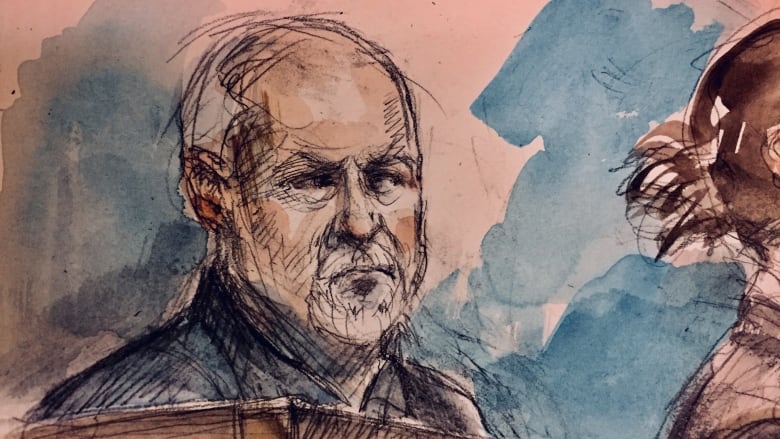
A year after Bruce McArthur's arrest, unsealed warrant information and exhibits from his earlierassault case continue to shed light on the activities ofthe serial killer, police investigations into missing men from Toronto's Gay Village and beyond.
CBC Toronto and other media outlets are in court fighting to unseal information inmore than 88 heavily-redacted judicial orders obtained by investigators in Project Houston and Project Prism.
- Bruce McArthur's trial could begin in September 2019, says judge
- Covert police search of Bruce McArthur's home cut short when he unexpectedly returned home
The task forces were created to probe the disappearances of Skandaraj Navaratnam, Abdulbasir Faizi and Majeed Kayhan between 2010 and 2012, and then Selim Esen and Andrew Kinsman in 2017.
On Jan. 29, 2019, McArthurpleaded guilty to all eight counts of first-degree murder.
The timeline below includes the information that has been unsealed from the investigations, exhibits from McArthur's assault case, the agreedfacts from his first-degree murder sentencing hearingand most of CBC Toronto's reporting so far.

Late 1990s:Bruce McArthurbeginsa relationship with a married man "towards the end of his [own] marriage," according to the pre-sentence report for McArthur's assault conviction. The menstaytogether for four years.
1998: McArthurmoves to Toronto after leaving his marriage.
1999:McArthursees a psychiatrist"as a result of difficulties coping with the breakup of his marriage and his first gay relationship," according to the pre-sentence report from his assault conviction.
That same year McArthuralso meetsSkandaraj Navaratnam.
December 2000: McArthur and his wife sell their house in Oshawa.
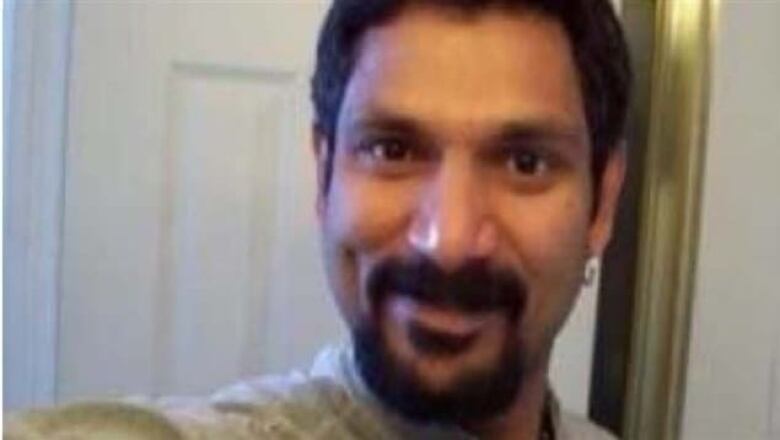
Early 2000s:McArthurand Navaratnamare in a relationship at some point during this time.
McArthur assault conviction
Oct. 31, 2001: McArthur assaults a man with a metal pipe in the man's home. McArthur turnshimself in to police. Throughout the case,McArthurmaintains that he blacked out before the assault and doesn't know why he did it.
Jan. 29, 2003: McArthur pleads guilty toone count of assault causing bodily harm and assault with a weapon.
March 19, 2003:Dr. Marie-France Dionne writes a psychological report about McArthur at the request of his lawyer to find out if a mental health issue could have led to the assault.
In the report the psychiatrist found "no sign of mental health problems" that could have contributed to the incident, and offered no other explanation for the assault.
Dionne writes that McArthur has a "very minimal" risk for violence, and in terms of personality, she characterizeshim as a "passive and indecisive" man who seeks "to maintain an image of being a proper and cooperative person, prone to behaving correctly and modestly."
April 11, 2003: McArthurissentenced to one count of assault causing bodily harm and assault with a weapon.
The Crown and McArthur's lawyer entersa joint submission for a conditional sentence. Court transcripts show the Crown thinks, "it wouldn't be in society's interest or Mr. McArthur's interest to have him go into jail at this point in time."
Instead McArthur serves his two years less a day sentence in the community with restrictions like a ban on visitingthe Gay Village, being in the company of a male prostitute and a 10-year weapons prohibition. McArthuris also ordered to attend counselling for anger management and provide a DNA sample.
3 men go missing from the Gay Village
Sept. 6, 2010: Skandaraj Navaratnam, 40, goes missing over Labour Day weekend. He'slast seenleaving Zipperz nightclub, near Church and Carlton streets, with two menaround 2 a.m. McArthur killed Navaratnam on or about this day. Eightyears later, police found Navaratnam's bracelet in McArthur's apartment.
Sept. 16, 2010: Navaratnamis reported missing by a friend.
Dec. 29, 2010: Abdulbasir Faizi, 44, callshis wife and tellsher he isat work with colleaguesand willbe home later that night. His last known location is Steamworks, a bathhouse in Toronto's Gay Village. Faizi was killed by McArthur on or about this day.
Dec. 30, 2010:Faizi's cousin reports him missing to Peel Regional Police.

Jan. 4, 2011: Police discoverFaizi's 2002 Nissan Sentra abandoned on Moore Avenue, in the area of St. Clair Avenue East and Mount Pleasant Road.
It's just a short drive from the home on Mallory Crescent where McArthur storeshis tools and where planters with the remains of his victims arelater recovered. The couple who owns the house were away for the holiday season.
McArthurwas also house sitting for the owners of a house about 1km away from where police found Faizi's car. Upon their returnthe owners of the home, south of Mt. Pleasant Cemetery, discovered a dark stain on the floor of their bedroom. McArthur told them he spilt Coca Cola and tried to clean it. In 2018, investigators found that McArthur had stored bags of hair in a shed on that property.
Oct. 18, 2012: Majeed Kayhan, 58, islast seen by a friend in the area of Alexander and Yonge streets. Kayhan was killed by McArthur on or about this day.
Oct. 25, 2012: Kayhanisreported missing by his adult son.
November 2012: Police createProject Houston, a task force, to probe the disappearances of Navaratnam, Faizi and Kayhan.
Dec. 17, 2012: Police obtainthe first judicial order of Project Houston, a tracking warrant for a vehicle. Like all of the warrants in the investigation, police obtainan order sealing the tracking warrant from the public.
The investigator hasto provide the court reasonswhy the warrant should be sealed. Those reasons includeprotecting a confidential source and one underage victim. The task force obtainsabout 40 more warrants before it gets shut down in April 2014.
Police chase dead end suspect
Dec. 20, 2012: Police obtain a general warrant for a residence in London, Ont., owned by James Alex Brunton. A general warrant gives police the power to "use any device or investigative technique, or procedure" to do whatever is described in the warrant that would normally be considered an unreasonable search and seizure.

The task force investigatesBrunton as a murder suspect in the disappearance of Skandaraj Navaratnam.
At least six other Project Houston judicial orders areobtained in connection to Brunton by Project Houston. In the end Bruntonisnot connected to Navaratnam, but pleads guilty to child pornography charges in January 2014.
Sept. 23, 2013: The final judicial orders of Project Houston areobtained.
Police interviewMcArthur
Nov. 11, 2013:McArthur was interviewed by police as part of Project Houston because an analysis of Navaratnam and Faizi's belongings showed they knew him. In the interview, McArthur told investigators he knew Navaratnamfrom a group he would socialize with at a Toronto bar called the Black Eagle. He denied having a sexual relationship with Navaratnam.

McArthur also admitted to knowing Kayhansince 2003 in the interview. He told police Kayhan had worked for him doing landscaping for a month and the two men had a sexual relationship that McArthur said he broke off. McArthur was not a suspect at the time of the interview. He was treated as a witness in the missing person's cases.
Nov. 29, 2013: McArthurbuys the maroon-coloured 2004 Dodge caravan where police would later find traces of Kinsman's blood.
April 2014: Police shut down Project Houston after 18 months because they can'tfind any criminal evidence.
June 3, 2014:McArthur gets a record suspension from the Parole Board of Canada in connection withhis 2003 assault convictions. That means his criminal record was essentially expunged. At the time McArthur had already killed three men without detection.
More men go missing, some unreported
Aug. 15, 2015: Soroush Mahmudi, 50, islast seen asleep in hisapartmenton Markham Road in Scarborough around noon. He was scheduled to work later that day but never showed up. McArthurkilled Mahmudi on or about this day.
Aug. 22, 2015: Mahmudi'swifereports him missing.
August 2015: The family of Kirushna Kumar Kanagaratnam, 37, last spoke to him by phone from their home in Sri Lanka.
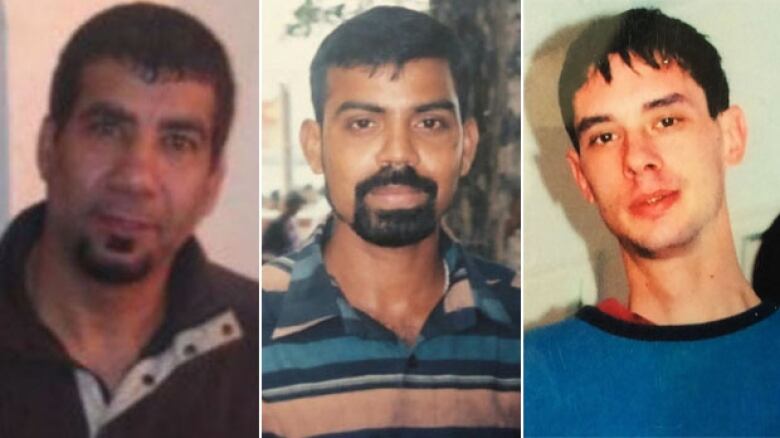
Jan. 9, 2016:Kanagaratnamwas killed by McArthur on or about this day.His family never reported Kanagaratnam missing because they thought he was in hiding after the Canadian government rejected his refugee application.
April 22, 2016:DeanLisowick, 47, was last seen when he was discharged from the extreme weather program at the Scott Mission on Spadina Avenue. He was a regular user of Toronto's shelter system.
April 23, 2016: Lisowick was killed by McArthur on or about this day.Unlike most of the other victims, Lisowick was never reported missing.
Attempted choking incident
June 20, 2016: McArthur asked a man he'd known for years to meet him in his van, in a parking lot. The man got into the back of the van and McArthur asked him to lie down on a fur coat setup there. McArthur tried to strangle the man, but he was able to escape.
The victim then called 911 and gave a statement to police. McArthur then went to the police station on his own, was arrested and gave a statement. An officer released McArthur without charges, believing his statement was credible.
Police did a criminal record check on McArthurbut nothing came up because his assault convictions had already been expunged.
Investigators would later find photos of this victim on McArthur'selectronic devices, in some of them the man is wearing a fur coat that looks the same as the coat used to pose his deceased victims.
A Toronto police officer is expected to face two charges of professional misconduct in connection with this incident. Sgt. Paul Gauthierhas accused the force of turning him into "a scapegoat" to divert attention from other errors made during the investigation.
Project Prism
April 7, 2017: McArthur emails himself a photo of Navaratnam, his first-known victim.
April 16, 2017: Selim Esen, 44, goes missing over Easter weekend. He islast seen near Yonge and Bloor streets. McArthur killed Esenon or about this day.
April 30, 2017: Esenisreported missing by a friend.
June 26, 2017: Andrew Kinsman, 49, islast seen in Cabbagetown a day after Toronto's annual Pride parade. Surveillance video obtained by police shows Kinsman getting into McArthur'smaroon-coloured 2004 Dodge caravan around 3 p.m. McArthur killed Kinsman on or about this day. His cause of death was ligature strangulation.
McArthur alsodownloaded photos of "John" the man police found secured to McArthur's bed when they later arrested himfrom social media on this day, and saved them on his computer.

June 29, 2017: Kinsman isreported missing by a neighbour. Police later said a crucial piece of evidence was uncovered because Kinsman was reported missing within 72 hours. Investigators hinted that without that evidence McArthur might still be free.The two key pieces of evidence uncovered were the surveillance video of Kinsman getting into McArthur's van, and Kinsman's calendar, which had an entry for "Bruce" on June 26, at either 2 or 3 p.m.
Det. Dave Dickinson later cracked the case by cross-referencingan MTO list of vehicles, based on the description of the van from the surveillance video, with owners named "Bruce." There were only five matches and McArthur was one of them. From there, investigatorseliminated the other four options because none of them had chrome siding like the van seen in the surveillance video.
August 2017: Police establish Project Prism task force to probe the disappearances of Esen and Kinsman.
Aug. 16-17, 2017: The first two judicial orders are made for Project Prism. One is a production order for Google and the other is a production order for Rogers Communication.
A production order gives police the power to compel a person or organization to provide documents or records. In the case of these two orders, investigators were looking for IP address logs for Kinsman's email accounts and Kinsman's cell phone records.
Since those first two, the task force obtainsanother 22 production orders, including ones for banking and phone records and Highway 407 usage.
Police eye McArthur
Sept. 6, 2017: Toronto police's mobile surveillance unit starts tracking McArthur's movements.
Sept. 8, 2017: For the first time in the investigation, police use Bruce McArthur's name in their request to seal a production order for Bell Canada.
Sept. 14, 2017: Police obtaina tracking warrant for two of McArthur'svehicles, in order to allow "officers the opportunity to monitor ... the movements of McArthur."
Sept. 16, 2017: McArthur sellsan old, rusty, maroon-coloured Dodge Caravan to Dom's Auto Parts, an auto parts shop outside Toronto. Surveillance video shows a man believed to beMcArthur's relative dropping off the van around 10 a.m. and then being driven away in a white SUV.
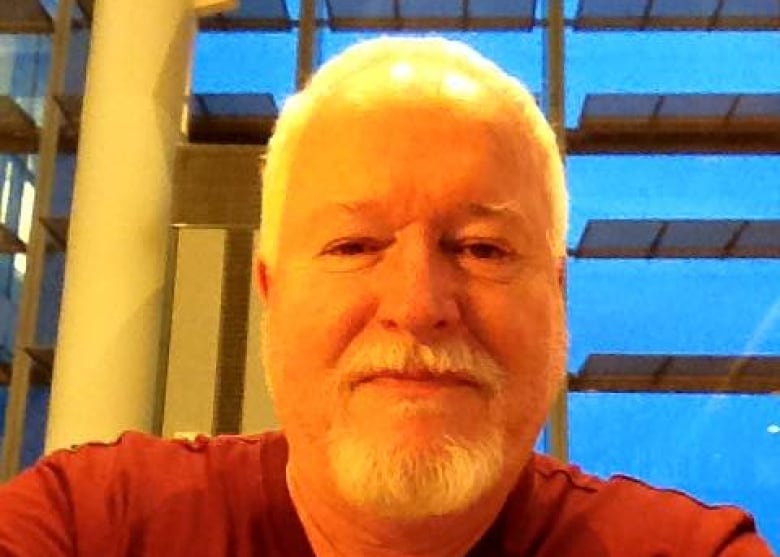
Oct. 3, 2017: Police visitDom's Auto Parts looking for the maroon-coloured Dodge Caravan. Investigators comb through surveillance footage and towaway the vehicle. The owner of the shop tells CBC Toronto that police found blood in the van.
Oct. 24, 2017: Police obtain a production order looking for user records for Squirt, a gay hookup site. They have reason to believe McArthur, Kinsman, Esen and Navaratnamhave accounts with the site.
Nov. 2, 2017: Investigators obtain tracking warrants for two cell phone numbers used by McArthur, and extend an existing tracking warrant for his vehicle in order to "track McArthur'scommunications and movements via his cell phone."
In the warrant application police say they are developing a plan to invite McArthurto a police station for an interview as a person of interest in the hopes that it might "incite him" to reach out to another person"if they are criminally involved," or take other actions that could help investigators locate Kinsman.
Kinsman's blood found in McArthur's van
Nov. 8, 2017:McArthur becomesa suspect inthe murder of Kinsman after police find Kinsman's blood in McArthur's van. As a result, the next day the mobile surveillance unit restartssurveillance of McArthur. Esen'sDNA was also found in McArthur's van through forensic analysis.
Nov. 17, 2017: Investigators use cadaver dogs to search the area behind 53 Mallory Crescent, where McArthur stored his landscaping equipment, with no results.
Dec. 5, 2017:Police obtain a general warrant to covertly enter McArthur's apartmentto clonedata from any digital devices and storage media and search for any items directly linked to Kinsman, like his cell phone or physical evidence.
Investigators entered the apartment for the first time that day, but had to leave quickly because someone (whosename is redacted in the warrant application)was on their way home.
Dec. 7, 2017: Once again, police returnto McArthur's apartment and this time startto copythe computer and hard drives in his bedroom. Investigators were in the apartment for justmore than an hour before they were alerted through surveillance that McArthur was on his way home.
During this search, police took DNA swabs of an orange stain on McArthur's pillow and a 7-9 inch metal bar wrapped with tape. They also found post-it notes with website account names and passwords. Soon after the search, investigators found over 100 photos of Kinsman in what they copied from McArthur'scomputer, some dating as far back as 2007.
Police say no evidence of serial killer
Dec. 8, 2017: In a news conference, police tellthe public they have no evidence of a serial killer operating in the Gay Village.
Dec. 11, 2017:Police install ahidden camerato capture the garage door of 53Mallory Crescent, where McArthurworked as landscaper and stored tools.
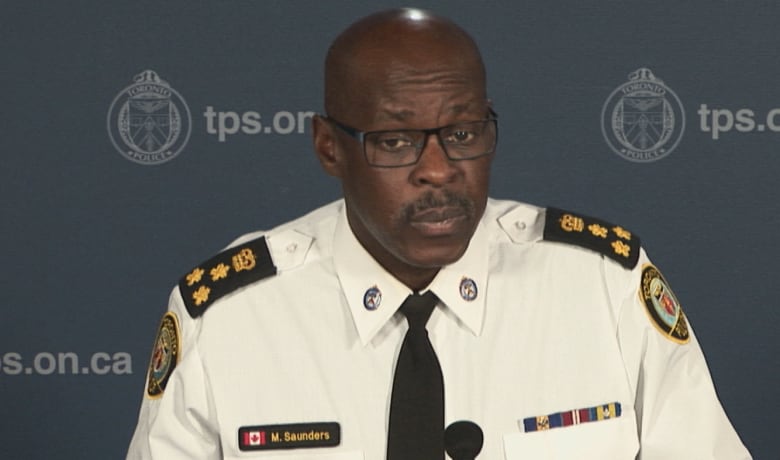
Jan. 17, 2018: Police uncover crucial evidence linking McArthur to Esen and Kinsman's disappearances. Investigators found photographs of the two men, and other victims, deceased on McArthur's digital devices through forensic analysis. The serial killer had tried to delete the photos he took of his victims.
Most of thephotographs include evidence of McArthurposing his victims after he killed them. In several cases that meant posing the bodies ona fur coat, and leaving the murder weapon wrapped around the victim's throat.
McArthur arrested, charged with 1st-degree murder
Jan. 18, 2018:A man who told McArthur his name was "John" meets him at this Thorncliffe Park apartment in the morning. The two hadconnectedon Growlr, a gay dating app, in thesummer of 2017. McArthur and Johnhad been intimate several timesbefore they met up on this day. But this timeMcArthurasked the man if anyone knew he was coming to seeMcArthur, and John said no it was a secret.
McArthurlater restrained John to his bed andtried to tape his mouth shut. At this time McArthur was under constant police surveillance. When officers saw a man go into the building with McArthur they went to his apartment and arrested McArthur after he answered the door. Policefound John restrained in McArthur's bedroom.
McArthuris then charged with first-degree murder in the deaths of Esen and Kinsman, even though the men's bodies haveyet to be found. Police also attribute three other murders of "unknown" men toMcArthurin a search warrant obtained that day.
Forensic analysis later revealed that McArthur had created an electronic folder of photos of John, alongside folders where he kept photos of the eight men he killed.
In a news conference, police reveal that Kinsman and McArthur had been in a sexual relationship for "some time."
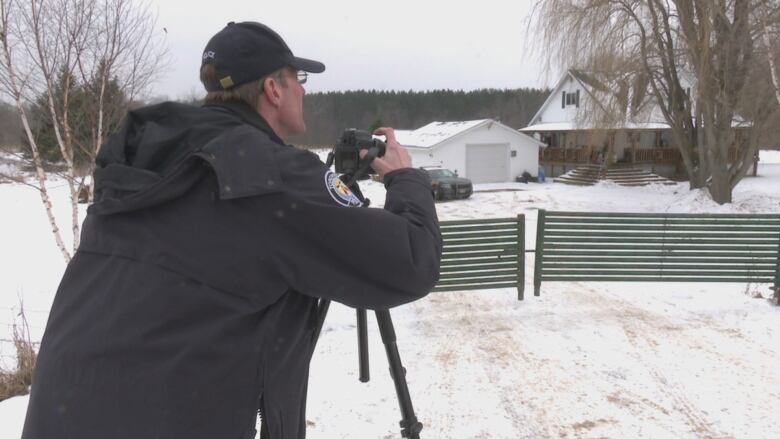
Investigators also saythey had secured five properties connected to McArthur. Those properties includeMcArthur's apartment, which police obtained a search warrant for, a house connected to a friend of McArthur's in Scarborough, another property connected to that friend in Madoc, Ont., a house in midtown Toronto where McArthur worked as a landscaper and another address in Toronto.
McArthur was questioned by police after he was arrested, at the time he lied to police and told them he hadn't seen Kinsman since Dec. 2016. When shown a photograph of Esen, McArthurtold police he looked like a man he'd randomly met and befriended in 2017,but did not remember Esen's name.
In McArthur's account, he said he picked up the man in the Church-Bloor area and brought him back to his apartment where the men had sex before Esen left. In reality, the photos McArthur took of Esen deceased show that he never left McArthur's apartment alive.
McArthurwould latergive police several more statements about the case.
Jan. 21-26, 2018: Police obtaina search warrant for a house on Mallory Crescent in midtown Toronto, where McArthur worked as a landscaper and stored tools. The owners of the housetold police they met McArthur through his sister, and McArthur would look after their home when they went up to their cottage in the summer. McArthur had keys for the couple's house and they'd seen him working with younger men of Middle Eastern descent.
Investigators also get search warrants for their own buildings like Forensic Identification Services and 33 Division, so that they can examine items seized from McArthur's apartment and the other addresses searched.
The items seized include 10 labelled red and silver USBstorage sticks, the writing on the labels isredacted and under seal in the warrant applications.
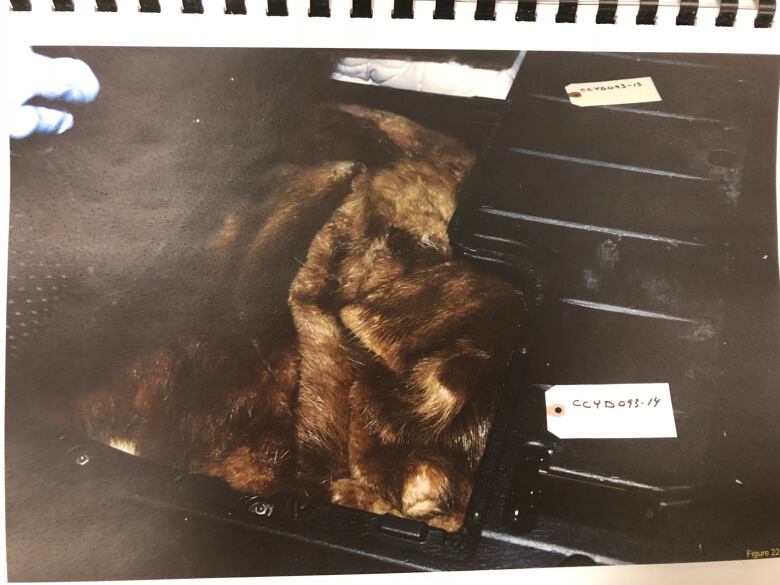
Police found a duffle bag in McArthur's bedroom that had duct tape, a surgical glove, rope, zip ties, a black bungee cord and syringes in it. They also located some of the victim's personal belongings, including:Lisowick's beaded necklace, Esen'spersonal notebook, and Navaratnam's bracelet in McArthur's apartment.
The fur coat McArthur posed many of his victims in after killing them was found in a hidden compartment inhis 2017 van.
Jan. 22, 2018: SoroushMahmudiis identified as one of McArthur'svictims in a search warrant application. His murder is listed in the offences connected to the warrant.
Jan. 26, 2018:MajeedKayhan is identified as one ofMcArthur'svictims in a search warrant application. His murder is listed in the offences connected to the warrant.
Remains found in large planters
Jan. 29, 2018: McArthurischarged with three additional counts of first-degree murder in the deaths of Majeed Kayhan, Soroush Mahmudi and Dean Lisowick.
Police also revealthey discovered dismembered remains in the bottom of large planters at the house on Mallory Crescent. Investigators call McArthur a serial killer for the first time.
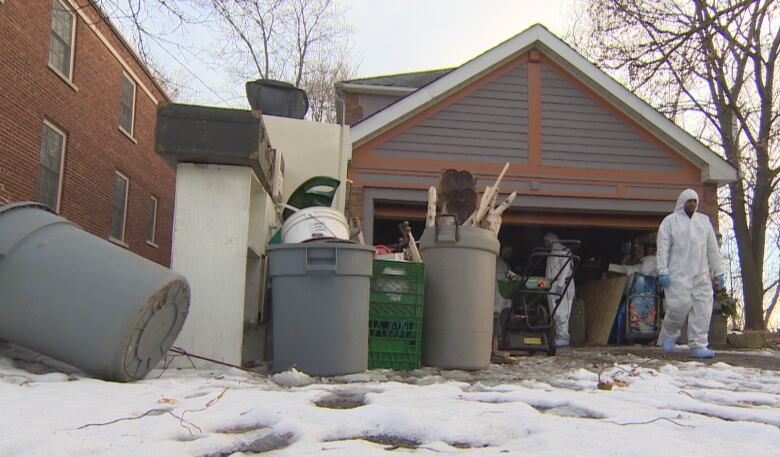
Feb. 8, 2018: Police say they've identified the remains of Andrew Kinsman from the large planters seized from the house on Mallory Crescent.
Feb. 16, 2018:Skandaraj Navaratnamand AbdulbasirFaizi are identified as twoofMcArthur'svictims in a production order application. Theirmurders arelisted in the offences connected to the application.
Feb. 23, 2018: McArthurischarged with first-degree murder in the death of Skandaraj Navaratnam. Police identified Navaratnam's remains from one of the large planters seized from the Mallory Crescent house where McArthur stored landscaping equipment.
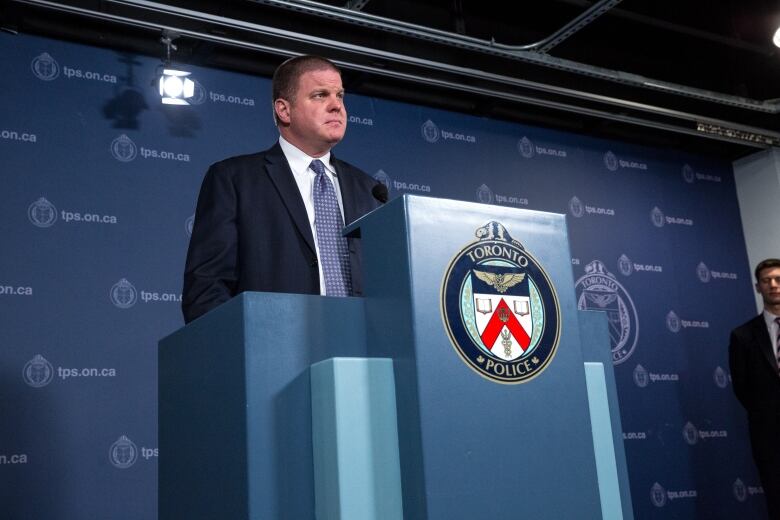
March 7, 2018: Police obtain a general warrant to siftthrough all of McArthur's emails for connections to hisvictims.
April 4, 2018:Police obtain a production order for McArthur'sprobation records from his 2003 assault conviction. In the application police note their efforts to "trace McArthur'smovements since he became an adult" have been hampered by McArthur's ex-wife and son's "unwillingness to talk to police."
April 11, 2018: McArthurischarged with first-degree murder in the death of Abdulbasir Faizi. Police believe the two knew each other. In a news conference police also tellreporters they'veidentified three more sets of remains from the planters belonging to Selim Esen, Dean Lisowick and Faizi.
April 12, 2018: In a warrant to continue searching McArthur's apartment, police say they have no evidence to suggest anyone assisted McArthur with the murders. Although during the investigation policedid explore whether a number of McArthur's family and friends could have helped with the killings.
This search warrant is the last of the judicial ordersCBCToronto and other media outlets currently have access to. More judicial orders have been issued since, but they remain sealed.
McArthur charged with 8th count of murder
April 16, 2018: McArthuris charged with first-degree murder in the death of Kirushna Kumar Kanagaratnam. His remains areidentified from planters along with six other men McArthur is accused of killing. Police had previously released a deceased photo of Kanagaratnam as a last resort to identify him.
May 7, 2018: Since the groundthawed, police sendout teams of cadaver dogs this week to roughly 100 properties linked to McArthur.Investigators do not disclose the addresses, but saythe properties they'd searchedwere sites where McArthur worked as a landscaper.

May 15, 2018: Police finish an inch-by-inch search of McArthur's apartment. Investigators collectmore than 1,800 pieces of evidence from the apartment in what they call the "largest forensic examination" in Toronto police history.
June 1, 2018: Police canine units finish their searches of roughly 100 properties connected to McArthur, including the Mallory Crescent home, where investigators findthe remains of seven men in large planters. Police say they need to do some follow-up investigatingbefore deciding if there will be further searches at some of the properties.
July 2018: Toronto police quietly launch the service's first-ever dedicated missing persons unitin the wake of the McArthur investigation and public scrutiny around how the cases of his victims were handled. The unit consists oftwo lead detectives, four detective constables as investigators, and one analyst.
Police dig upmore human remains
July 4, 2018: Police begin excavating the forested ravine behind the Mallory Crescent home where McArthur worked as a landscaper, and the remains of sevenof the men he's charged with murdering were found in planters.
Black bags were seen being loaded into a coroner's van at the property. The next day police confirmed they'd found more human remains in the forested ravine area.

July 12, 2018: Police complete their excavation of the forested ravine area behind the Mallory Crescent home. Investigators say they dug up human remains nearly every day they were there.
July 20, 2018: In a news conference,police say they've identified the remains of Majeed Kayhan from the evidence theyuncovered in the ravine area behind the Mallory Crescent home where McArthur worked as a landscaper.
Kayhan was the only McArthur victim whoseremains had yet to be found.
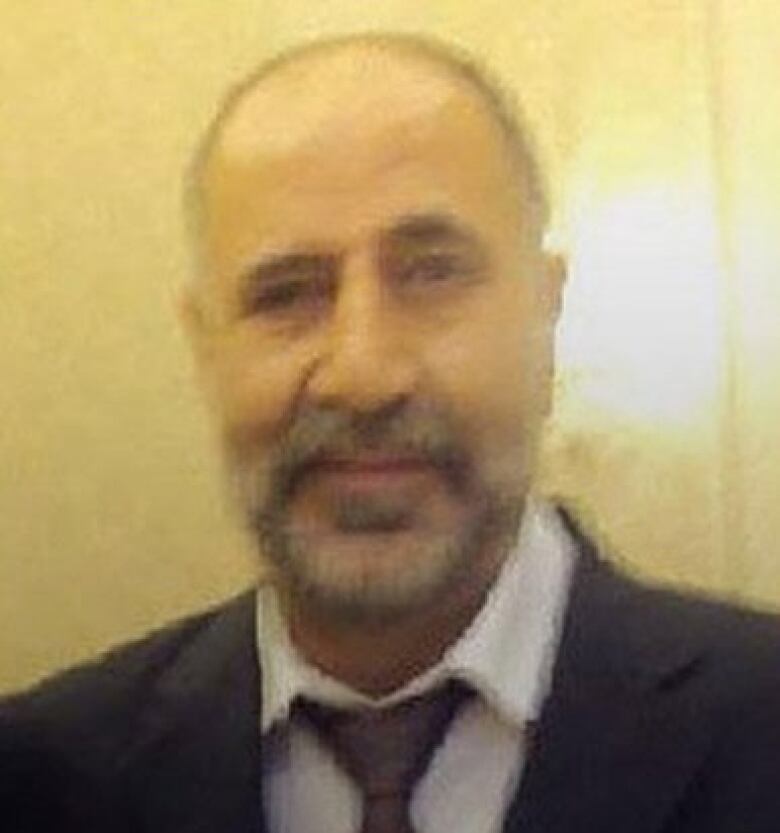
Police had previously identified the remains of Skandaraj Navaratnam, Andrew Kinsman, Selim Esen, Abdulbasir Faizi, Kirushna Kumar Kanagaratnam, Dean Lisowick, and Soroush Mahmudi from planters stored on the Mallory Crescentproperty.
At the news conference, lead investigatorHank Idsingasaid police have no reason to believe they will find the remains of any other possible victims at any of the roughly 100 properties they've searched across the Greater Toronto Area since January.
Idsinga also said investigators continue to review cold-case files and missing-persons cases dating back to the 1970s and 1980s.
Oct. 22, 2018:McArthurwaives his right to a preliminary inquiry, and is ordered to stand trial on eight counts of first-degree murder.
Nov. 2, 2018: Investigators say they've releasedthe remains of some of McArthur'svictims to their families.

Nov. 30, 2018: Ontario Superior Court judge says McArthur's trial on eight counts of first-degree murder will begin Jan. 6, 2020. The judge saidthe trial will likely take three to four months.
Jan. 16, 2019:McArthur made a brief appearance in a downtown Toronto court. The serial killer no longer hada beard ashe did inFacebook photos from before his arrest, which were widely circulated by the media, and his head was completely shaved.
McArthur pleads guilty
Jan. 29, 2019:McArthur pleads guilty to all eight counts of first-degree murder when he appears in a downtown Toronto courtroom.
Crown lawyers say McArthurmurdered his victims while they were confined during sexual acts before dismembering them. He is said to have kept "souvenirs" of the murders, including jewelry and notebooks.
His guilty plea will result in an automatic life sentence, with no chance of parole until he is at least 91 years old.

Feb. 4-5, 2019:Crown attorney, Michael Cantlon reads a 36-page agreed statement of facts in court during McArthur's sentencing hearing. The document reveals many new shocking details in the case.
Those facts are then followed by emotional victim impact statements from the eight victim's friends and family. The statements offer a glimpse into the lives of the men McArthur killed, and the effect their murdershave had on loved ones.
Judge hands down life sentence with no chance of parole for 25 years
Feb. 8, 2019: Ontario Superior Court Justice John McMahon calls McArthur's actions "pure evil" while handing down a life sentence. However, McMahon optsto allow McArthur to apply for parole after 25 years, even though, as he noted, it's highly unlikely the serial killer will ever walk free.
The Crown had argued he not be eligible for 50 years but McMahon said he factoredMcArthur's guilty plea and age into his decision to allow parole eligibility after 25 years.
McArthur, now 67, will be 91 by the time he can apply for parole.
Following the verdict, McArthurshuffled silently out of the courtroom.












_(720p).jpg)


 OFFICIAL HD MUSIC VIDEO.jpg)
.jpg)



























































































